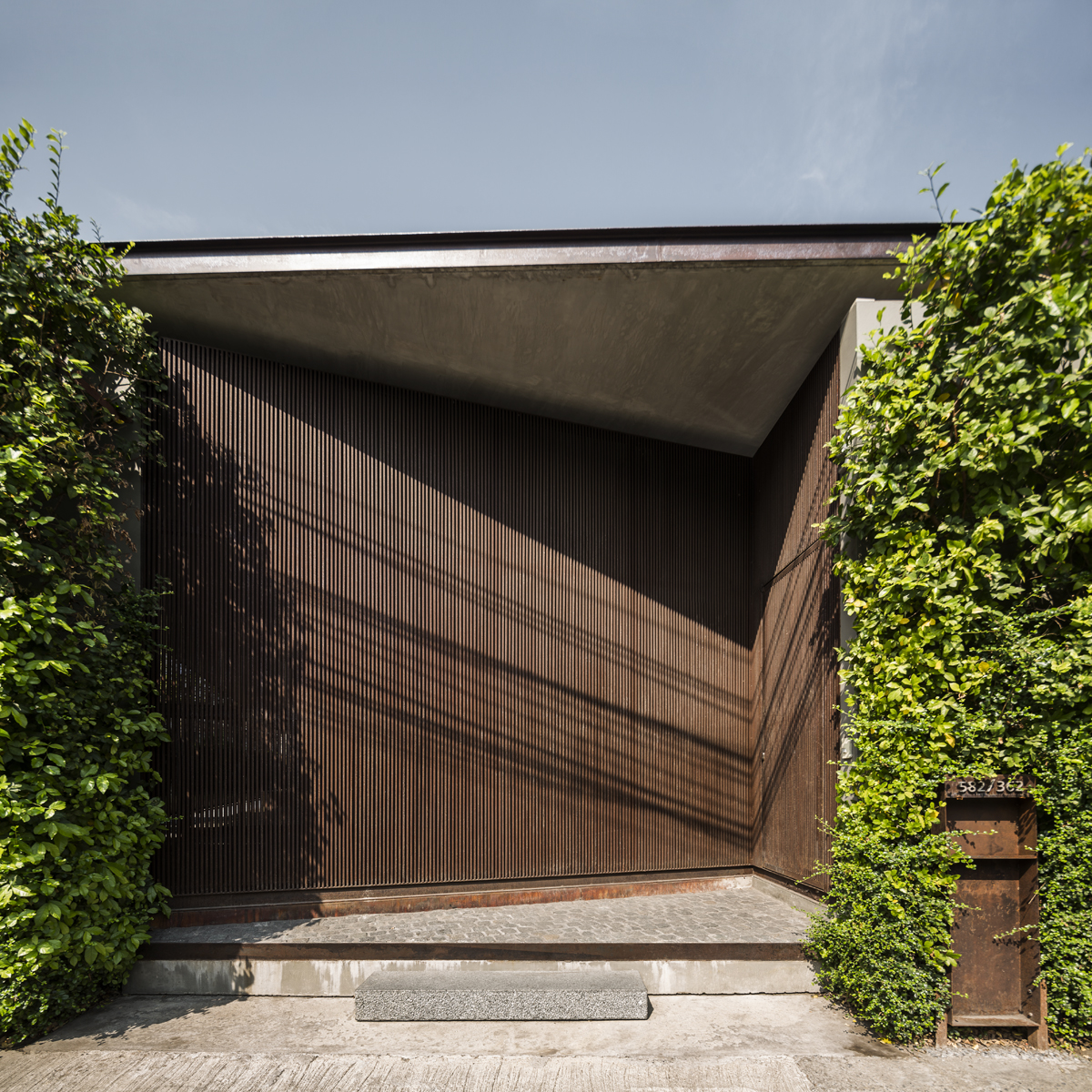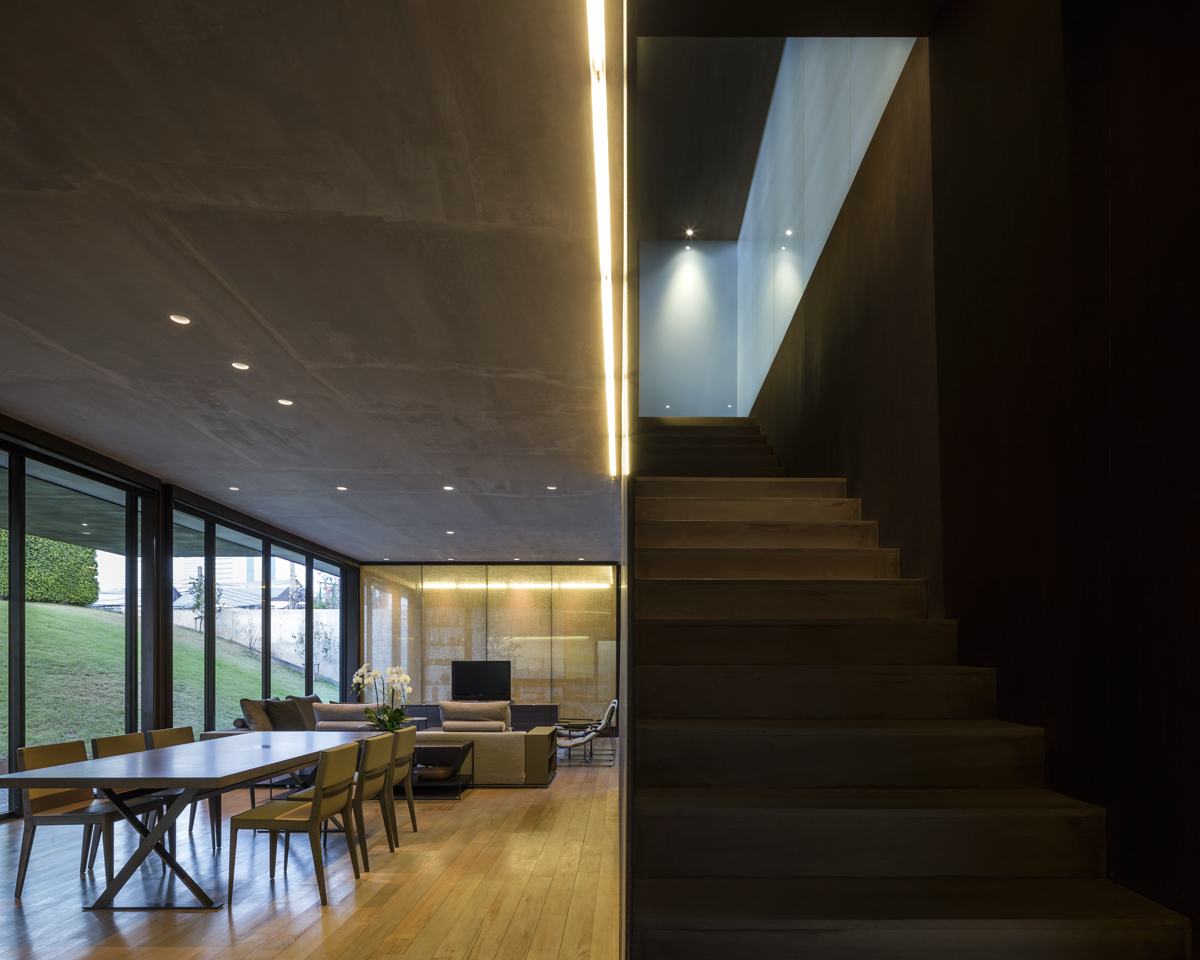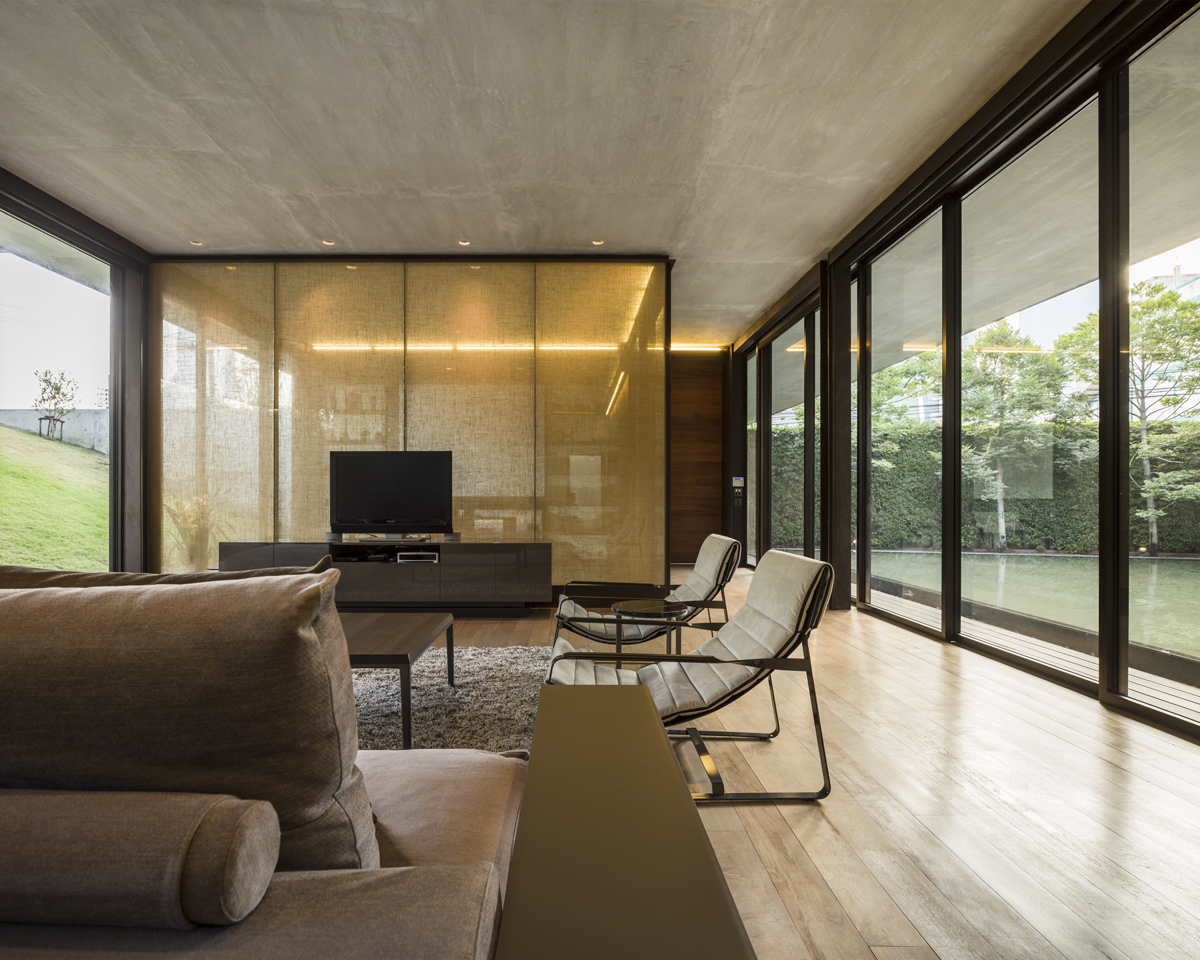IN RECENT CONVERSATION WITH art4d, BANGKOK-BASED ARCHITECT, BOONLERT HEMVIJITRAPHAN OF BOONDESIGN REVEALED THAT HIS WILL TO OFFER AN ALTERNATIVE WAY OF DOMESTIC LIVING IS GROUNDED IN SOMETHING MORE THAN SIMPLY BEING RETICENT.
art4d: Most of Boon Design’s architectural creations primarily use steel and wood while concrete often comes in the form of structure, and not exactly in the way that the material’s nature is exposed…
Boonlert Hemvijitraphan: We use concrete in other ways. I don’t like columns so what I use as a substitute is 12-meter-long prefabricated concrete. I like simplicity. I probably did things that would go unnoticed by other people. Concrete has been with the world since the Greek civilization but once you do things you have never done before, you think it’s an innovation, but it has always been there. To me, concrete has its own quality, whether it’s the appearance or content, there is always something to talk about. To use it, there has to be a purpose. Take steel for example. I do not actually like steel or wood in particular, I don’t really like concrete either, so what the heck do I like, exactly? I like anything that is simple, something that is one complete point. Steel used to be the choice of material for home construction because I was fed up with the concrete workmen because that was something I couldn’t control. The first house I built, I designed the foundation with columns and then I put a steel structure and prefabricated floor slabs on top, then comes the concrete. Steel was actually a feature that I turned to simply because I didn’t really want to deal with the concrete workmen, you know what I mean? If you ask me about the essence of steel, I think most people know that steel brings heat and certain unnatural discomfort because there’s burning required in the production process. It contains certain qualities that have psychological effects on us users. Every material has its own soul and it’s our job to choose the one with the most suitable content and capabilities. You use steel in the construction of a retaining wall because it offers great tensile strength while concrete is good for pressure. A choice of material depends on what you are going to use it for. If you choose materials from your personal preferences, then that’s it. It’s the end right there. You will have nothing but beauty and there is really no other contents you can treat apart from scale. It is pretty much like when you enter a dead-end road. A work with no content is nothing but style and if it is only style that it has, then it does not interest me. If you look at Ando (Tadao Ando), he takes the concept of homogeneous architecture where the floor, wall and ceiling are arranged in a homogenous space and structure. But such approach comes with certain limitations in terms of the access to concrete. But when it is a homogeneous arrangement, he employs the program of promenade architecture, very much like how Russian architecture has its unique lines. It has it own solidity. A good architecture depends on the program. If the program is bad, there is nothing to it.
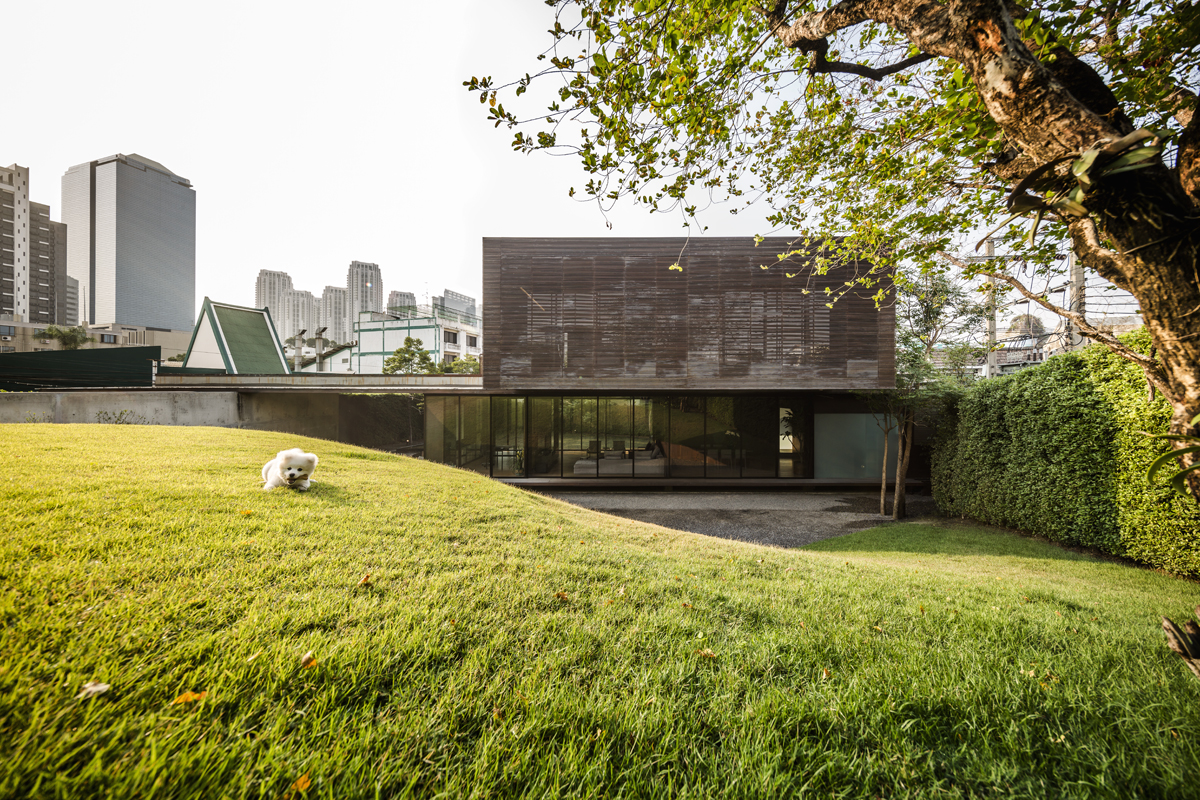
art4d: So concrete is just a material you use, a medium.
BH: Yes. But it has to serve certain functionalities. Like the mound of Chana Residency. I’m not the kind of person who grows grass on concrete. The house is actually very simple because my intention was to build a garden with a house, not a house with a garden. Once the design is approached differently, that is how the house is developed.
art4d: So can we conclude that right from the design process, materials are like tools that you approach alongside the development of the content?
BH: Yes. I think I look at the future in a reverse manner. I see the big picture and I think many architects are the same. I am the kind of person who sees images. And an image may not be as good as it should be if you overdo it. There is the great truth in this world and we all have only two eyes, so to be able to see the whole world, you have to be the world. When you are you, and Boonlert is only Boonlert, that is all the world you can see. But once I find a way to connect with all the things in the world, I become a part of the universal truth. I’m not being philosophical here but it’s about reality that is the truth. I would not be able to design this house if it was before because I have this hierarchy of success that the house I would design has to have this type of entrance, or kitchen because we all have our own preferences. We may stumble upon something we find interesting and want to experiment with new things but the reality is not like that. The reality is the world already determines what we are capable of in this lifetime.

Chana’s Residence, Images © Boondesign
art4d: So what you are saying is if you look at it in your own way, it wouldn’t be transferred to other aspects, dimensions and you wouldn’t design it any other way.
BH: That’s right. I used to struggle, a lot, to become a good and successful architect. I stopped that when I was in my early thirties. I still try, though. The first house I did, I know it was different from those in Thailand’s construction scene and I knew it wouldn’t make me famous.
art4d: Is it safe to say that you choose a material based on its functionality, like steel or wood should be used a certain way for a certain purpose? Can you think of the functionality of concrete when you work on the designs for different projects?
BH: Mostly load bearing.
art4d: So when you think of a material that can handle load bearing or other heavy duties, both in the conceptual and physical aspect, concrete is usually the answer.
BH: Yeah because this house never lies. The floor of the second story overhangs to almost 7 meters and you can’t see that in photos because it’s very thin. As for the front, in order to achieve the desired thinness, I used steel columns, which was actually quite unorthodox considering the load bearing theory of steel and concrete. But we were able to pull that off, and to do so, you need to have the knowledge in structural work, too.
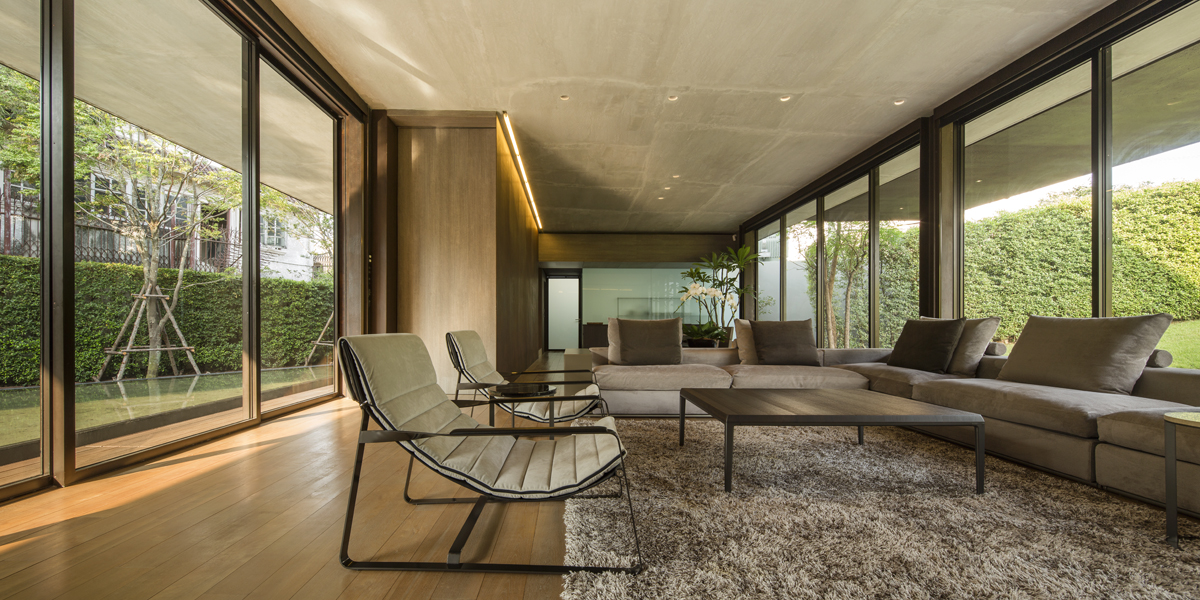
art4d: In terms of your concrete know-how, do you collaborate with your team of workmen or do they already have the skills?
BH: They do what I tell them. I have a background working as a workman. I think I’m an architect with the spirit of a workman. I’m not exactly obsessed with it, because if I were to be, it would become a limitation. Architects talk to workmen and they say they can’t do what architects want them to, and when the situation is reversed, the workmen say that architects don’t understand because they don’t see the practical side of it. But I see more than most workmen do. So the content of concrete or whatever material I use, it serves a functionality. Like with this house, I want the material that bears the load of the second story and the floor to be the same. The presence of concrete becomes lighter because both sides are connected. There is really nothing much about this house except that it’s in the garden with the two plates, one at the bottom, one at the top, which are essentially the house’s floor and ceiling. The landscape on both sides is very powerful because the material we use is heavy, and the heavier it is, the more floatable it becomes. If you use gypsum board, the power will disappear. What I use relates to feelings. It’s like making a movie, and it’s the feeling you want for each scene. I don’t look at materials just as materials but compositions of feelings.
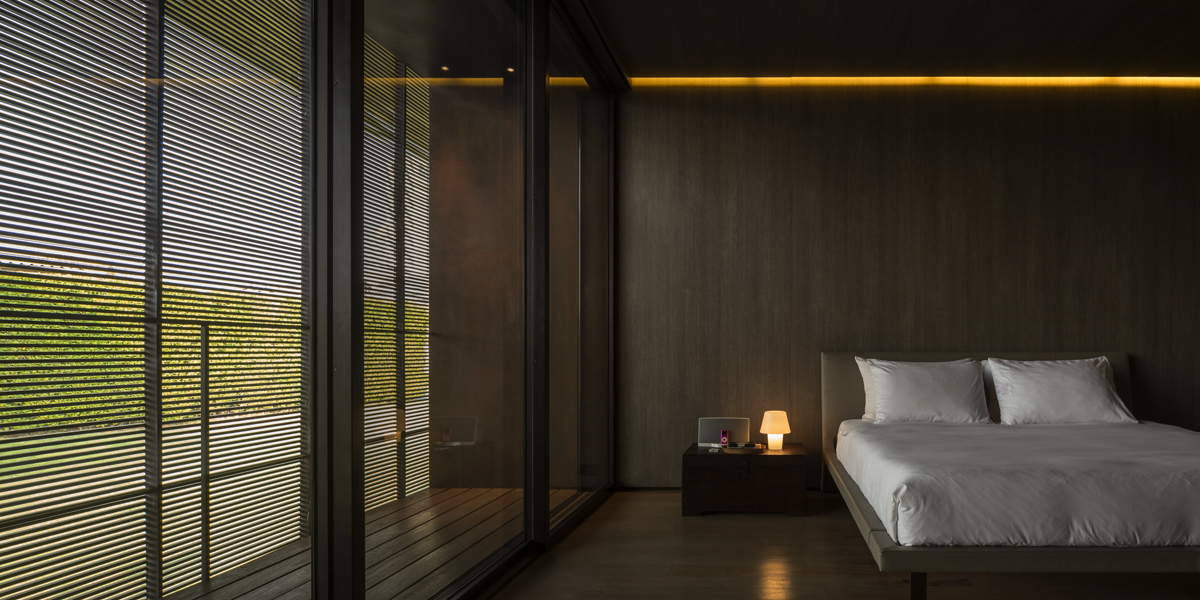
Chana’s Residence, Images © Boondesign
Why does a traditional Thai house look so good, you may ask, despite using the same material for the entire structure. It’s so powerful and homogenous, like Ando’s architecture. Once you add the ceiling, it’s done. This means that there has to be something so cool about the content. We’re architects, and we study a lot but we don’t seem to understand the nature of what ancient people did. I’m not saying that I want everybody to get up and build a traditional Thai house, but I’m trying to ask you to listen and learn about how people in the past used materials. I used to visit a museum of northern houses in Chiang Mai and I knew right then and there that if the architect is the one who designs the house, it wouldn’t be as it is, it can’t. The floor is thin with columns gradually descending and I’m talking about 10 cm. thin. Architects today would never do something like this, but I think it’s very cool and I don’t even know who designed it. As designers, we put too much emphasis on the excessive elements such as our preferences, our personal desires. What we really do is just this. Have you ever felt like you could not really go anywhere because there are too many factors? That one is good, this one is nice. We have too many choices, and once you have too many choices, you cannot end it. We’re not determined enough or confident enough to finalize. But once you know that’s all there is to it, it’s more rational. It isn’t exactly reason but more of a cause-effect process. Because this happens, that happens. It’s actually common sense that even a child can understand, like the way one knows about fear, knows how to laugh or cry. To me, that is the only role of architecture. But right now, we are introduced to lifestyles, to hipness, coolness and they are everywhere, which is fine, there is nothing wrong with that, but there are certain things that go beyond my interest.
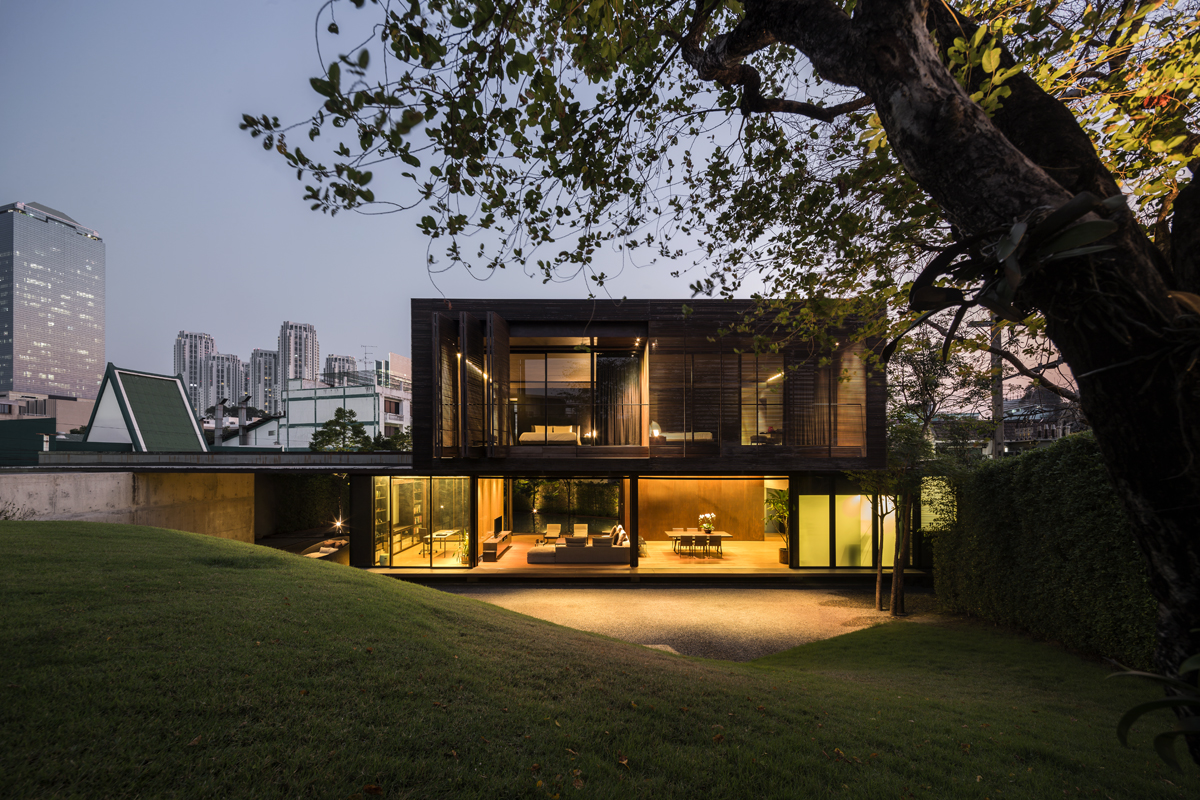
Chana’s Residence, Images © Boondesign
art4d: It’s like once you see the functionality of a material, it leads to the reconciliation of many things. But what about the colors, or truth to material, which are categorized as monochromic colors but you said it’s homogeneity because everything is unified into one. If that is the case, how do you feel about the color of concrete?
BH: Concrete is concrete. Wood is wood. Steel is steel. I don’t take the truth to material too religiously. I prefer to look at the quality. But surely, beauty is something we have to seriously consider but it isn’t the first thing I want to talk about. Beauty is mandatory but it isn’t the initial substance of my entire working process. If the rhythm is off, architecture is just like a bad piece of music. Say, if you drive past an eight-story condominium, situated on an 800-square-meter land and you see the entrance in the middle and a double acting door made of cheap aluminum and even the ground floor is occupied by rented rooms. You see tenants hanging their laundry and underwear at their rooms’ terraces. You get the picture. That is the architecture that lost its rhythm because functionality is all it serves. Architecture is something you create and it is supposed to be easy. If it gets too hard, I think there is something wrong there.

art4d: You said earlier that materials are compositions of feelings. What does concrete signify to you? Because concrete has its own hidden meanings and is often associated with solidity.
BH: It’s gravity. It’s weight. It is solidity. It depends on which level you take it to. The solidity makes it look floatable. If you use steel columns to bear the weight of concrete, that seems so impossible that some of us don’t even think about doing, but once it’s concrete columns, they fit naturally. So if you are going to do it, you have to come up with some tricks and learn to deal with these feelings. The material’s characteristic is not really the point, but it’s how you use it that is, what do you use it for and how, these are the points. Concrete is concrete, and you cannot turn it into water. Concrete has this liquid quality but before it is liquid, it used to be a solid substance, am I right? It liquidizes because you can pour it into a mold, and it can be casted. But it cannot stand alone without the bone, which is essentially the steel structure. If you are going to talk about it in the design aspect and how far can it go, there are so many ways for me to work with it because to me, there are no limitations. Have you seen the new projects? There are the ones that use reinforced concrete and the ones that are 100% concrete.

Wynn’s Residence, Images © Boondesign
art4d: We want to present different possibilities of how concrete can be used and how it can be the key elements, the structure, façade or whatever, which is what you said that with the quality that it has, there are still great possibilities. But in terms of the surface, with whatever element it is used for, do you think it can be transformed?
BH: Absolutely and you can see them anywhere. You change the proportion of the mixture. Look at the exposed aggregated finishes. I saw a detail at a secondhand shop and it is this very ordinary concrete covered with stones, you know, normal gray stones you find anywhere and that can be something different.
art4d: Is that what makes it different from steel, because steel doesn’t change, it stays the same like the way it was manufactured.
BH: You can wrap it. It’s like constructing a shell. Back when I was very serious about the homogenous quality of structure and architecture, I made that possible. It is up to you actually whether you want to do it or not. Sometimes, you deny the presence of piping but it can cause you a lot of troubles later. When you work on the true homogeneous architecture, piping is like blood vessels that you have to synchronize with the skin. But there is a gap when people try to separate…, making the skin feel really light. Look at Le Corbusier and the free façade, once it is what it is, it cannot be anything else, which is not wrong but the content is forgotten. That is why there are tricks created for the elevation, but no one really looks at what the quality conceived from the elevation really is because there isn’t really that much to see.

art4d: Is that why the proportion of materials you use in your works is almost equal?
BH: Of course. The works that I like are the ones that bring comfort and contentment. The hotel that I worked on, I use simple partitions and the floors of the upper stories are site-cast concrete and there is no ceiling. I feel like the structure is going back to the subject matter of a traditional Thai house. The transition of the compositions of traditional Thai residential architecture is very smooth because the floor and the ceiling use the same material. It is the same thing here. When we use concrete, how can we create a sense of nostalgia to a building that is completely new and contemporary in terms of the time of its construction. There is this vernacular quality on top of an interesting program. Ultimately, it is reconciled into the shape and form of a twin house with the functionality of a hotel. We approach the design as a hotel but we think about how to make people feel like they are not walking into a three-story building with mundane terraced rooms. I think this is the hotel typology that adds the new to the old, but the result isn’t entirely new. It’s another doable approach. That’s where I think the opportunity to create something new lies.

Wynn’s Residence, Images © Boondesign
art4d: Are there any buildings with concrete as the key element that impress you, in Thailand or wherever?
BH: The one by Peter Zumthor in Vals. I listened to the lecture and I didn’t really understand but I totally got it when I saw the real thing. The concrete is the structure but the surface is made of stones. The concept is essentially digging, scooping the land, into the underground. So the steps are created in relation to the arrangement of the stones. But stones are stones and molding is molding because that’s what he used. It’s a combination between the material’s surface and the structure. The roof is a separated element but I don’t think he thought there was the need to use concrete but concrete was like a foundation of the entire architecture. When you work on something, I don’t want you to be too obsessed with materials because each project has its own story. I worked on a house with the concept ‘max and more,’ so you can imagine what the owner was like. I ended up designing a floatable house, you know, the one that I talked about at the lecture at ASA. I saw an image of a man jumping off a cliff with his legs wide open, and that became the concept. I didn’t exactly want the floatability but the feeling had to be exaggerated, which explains the 14-meter overhang.
art4d: The difference between being in the space and seeing one, does something have to be synchronized there? Take the image of the cliff, for example, you look at the image and you see a cliff overhanging and a body of a man in the air. But the feelings of the person doing the jump and us seeing him do it are entirely different. So metaphorically, will this very same house feel completely different when someone actually lives in it?

Boonlert Hemvijitraphan, Portrait by Ketsiree Wongwan
BH: It is very much like that. From the outside, you see the cliff, but from the inside, you see a completely different thing. Surely, we didn’t incorporate the space of the cliff but the comparative feelings are exaggerated. Bedroom is still bedroom; it isn’t like you’re putting up a tent on the cliff and sleeping in it but it’s the feeling people get when they see it. I mean it does look like it was overhanging a lot there.
art4d: Is the feeling universal, how do you know for sure that others feel the way you feel?
BH: They are humans just like us. It is common sense.
art4d: But people can have different common senses, like art, viewers’ interpretations are not exactly the same with the artist’s intention.
BH: That’s understandable. That is why it has to be more natural. Sometimes art can be an artist’s obsession but nature is nature. You may like it or not, that’s another story. If I reach the point where my work becomes a part of nature, that’s close enough. I have doubts but every time I pitch something to my clients, they get me. Certainly, everyone has their own interpretations but trees are trees, a waterfall is a waterfall and that, to me, is enough. Architecture is harder when it requires certain qualities to serve its presence.
art4d: Last question, People usually say that our concrete architecture is still far behind others and especially Japan, why do you think that is? What makes them better?
BH: Responsibility. The Japanese built their nation on responsibility. If we have that, we can be just as good.

Boonlert Hemvijitraphan, Portrait by Ketsiree Wongwan
INTERVIEW: NARONG OTHAVORN / PAPHOP KERDSUP
boondesign.co.th


